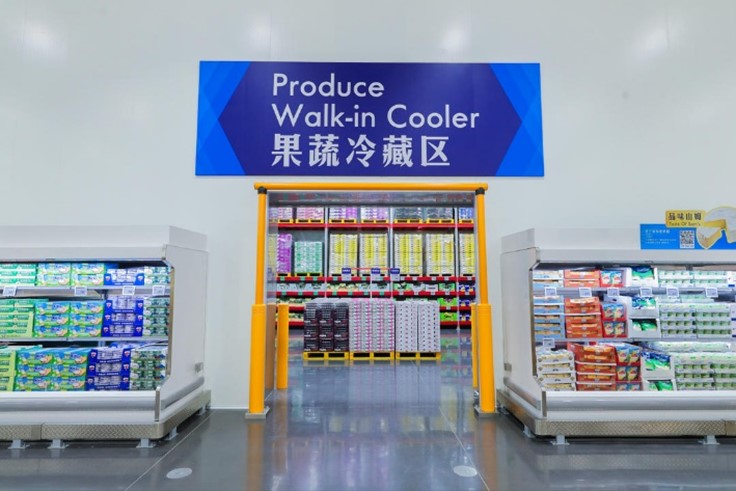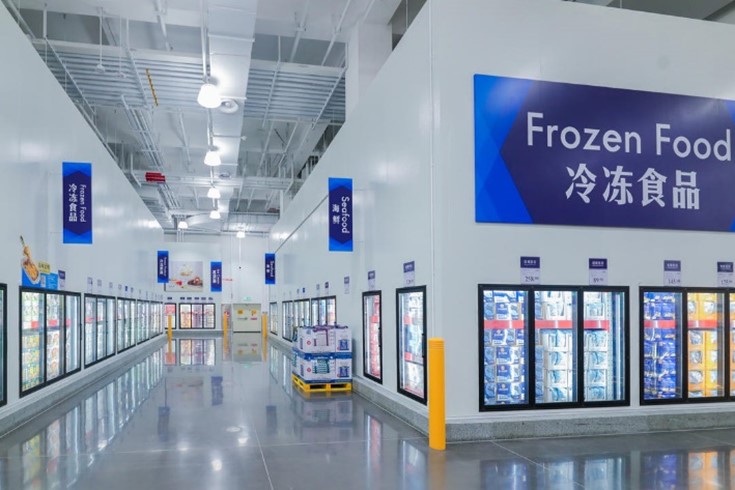
About Us
Newsroom
Responsibility
Supplier Service
CN
EN
Walmart China's three Sam's Clubs were named as "Green and Low-Carbon Model Stores" by China Chain Store & Franchise Association (CCFA) for 2023. Walmart’s multiple energy-saving and low-carbon operational measures, along with the construction of green facilities, will be recorded and published by CCFA as outstanding cases. They continue to offer new solutions to the industry's green and low-carbon transformation while creating a safe, comfortable, and eco-friendly shopping environment for members and customers.
As an active practitioner of low-carbon initiatives in the retail industry, Walmart is advancing energy conservation and emission reduction across its Sam's Clubs and Walmart stores nationwide by implementing a comprehensive strategy with multiple initiatives. These approaches include digitalized and intelligent management, energy-saving improvements, adoption of clean energy, staff training on energy conservation, store waste recycling, and surplus food donations, which continuously build low-carbon stores for the future of retail.

June 26th is the World Refrigeration Day. The application of refrigerants is highly relevant to the environmental issue of global warming, garnering increasing attention from the industry and the public. In retail enterprises, refrigerants contribute substantially to the carbon emissions of operating facilities over the course of the refrigeration equipment's lifecycle. Walmart China has been actively adopting more environmentally friendly refrigerants with lower global warming potential (GWP[1]) values in dozens of stores and cloud warehouses, playing a crucial role in the low-carbon transformation of its outlets.
Since the end of 2022, Walmart has introduced an "ultra-low carbon" CO2 transcritical refrigeration system in all newly opened Sam's Clubs. Currently, seven clubs are using this system for walk-in coolers, refrigerated and frozen display cabinets, and all freezing and refrigeration equipment in backrooms and processing areas.


Walk-in coolers and back-bar POS coolers used by Sam's Club
The CO2 refrigerant is a natural refrigerant with superior energy-saving, environmental, and safety properties, having an extremely low GWP value (GWP=1) and almost no carbon emissions. Compared to traditional refrigeration equipment in supermarkets, a single store using the CO2 refrigeration system can reduce carbon emissions by approximately 1,900 tons annually2
Additionally, the system is at the forefront of heat recovery and reuse in the industry. The heat produced during the compression of the refrigerant is recycled through a water loop and can be used for food thawing in store processing areas and hot water for staff. For example, the Sam's Club in Qianhai, Shenzhen, is expected to save 90,000 kilowatt-hours of electricity annually by using this system for heat recovery and reuse.

Walmart stores have gradually upgraded to R448A refrigerant for store freezing and refrigeration equipment.
Walmart is also seeking more efficient and cost-effective energy conservation and emission reduction solutions for existing store refrigeration systems. For instance, the company is gradually replacing the commonly used R404A refrigerant in supermarkets and convenience stores in China with the more low-carbon and environmentally friendly Honeywell Solstice® N40 (R448A) refrigerant, without the need to replace or modify the existing systems or equipment.
Compared to the traditional R404A refrigerant, R448A has a GWP value of 1,273, reducing carbon emissions by nearly 70%, and improving the energy efficiency of commercial refrigeration systems by 5% to 10%.
Currently, 26 Walmart stores and Sam's Clubs have completed the upgrade to R448A refrigerant, and starting this year, all newly built Sam's Club cloud warehouses will also adopt R448A refrigerant.
Becoming a "Regenerative" Company
Walmart has always been committed to its mission of "saving people money so they can live better," continuously exploring and broadening the ways to enhance people's lives for the past 62 years. In 2020, Walmart announced its shift towards becoming a "regenerative" company, placing humanity and nature at the center of its business practices to tackle the escalating climate crisis. This year, Walmart has met its goal of reducing 1 billion tons of greenhouse gas emissions in its supply chain by 2030, accomplishing this six years early.
[1]GWP (Global Warming Potential): A value calculated by the Intergovernmental Panel on Climate Change (IPCC) that represents the relative radiative impact of a given substance compared to carbon dioxide over a specific time period.
[2]Calculation based on serving the same terminal freezing and refrigeration equipment using R404A refrigerant (GWP value of 3,912)

 Walmart Hypermarket Mini Program
Walmart Hypermarket Mini Program Sam’s Club APP
Sam’s Club APP




